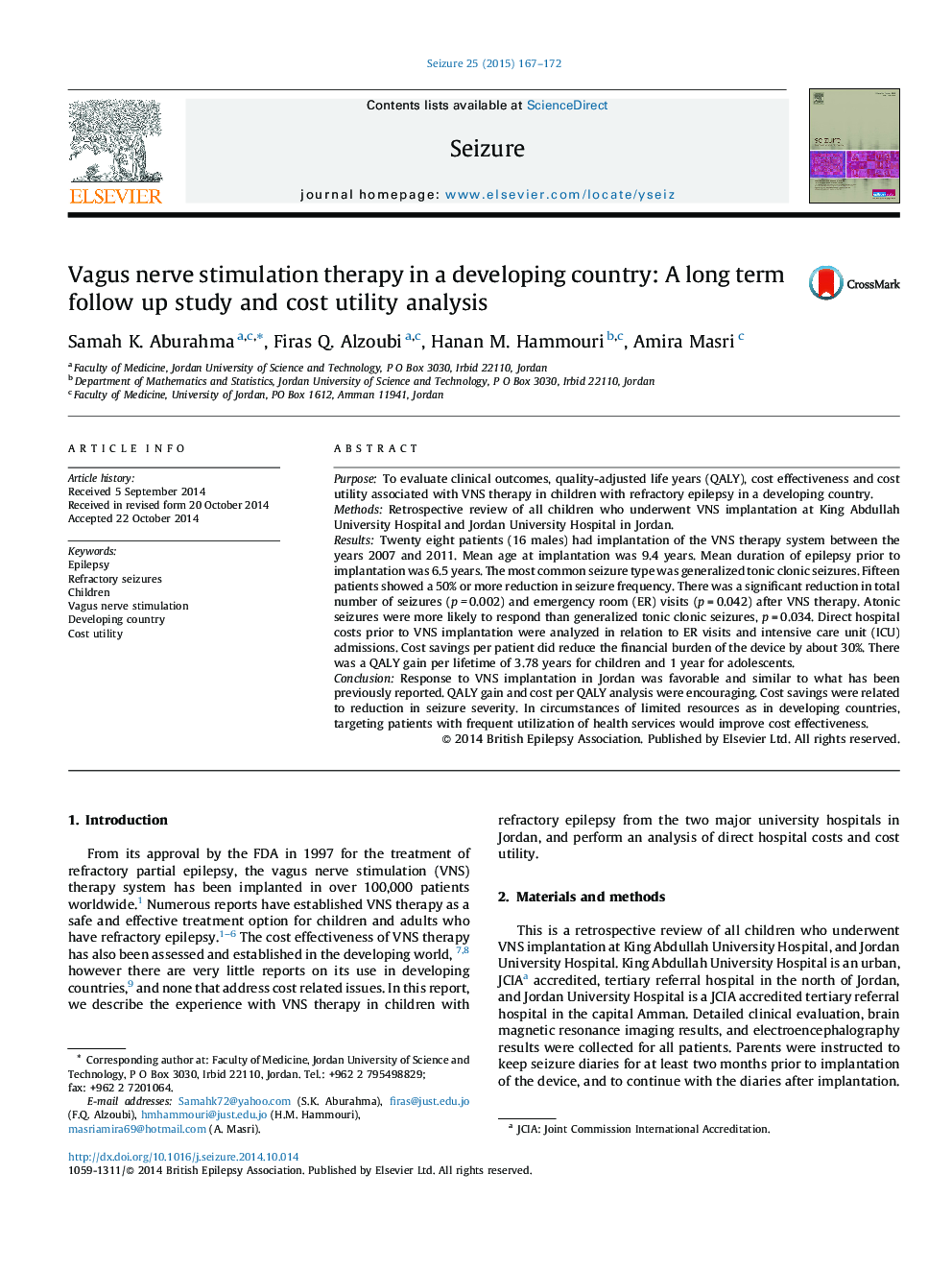| کد مقاله | کد نشریه | سال انتشار | مقاله انگلیسی | نسخه تمام متن |
|---|---|---|---|---|
| 340541 | 548323 | 2015 | 6 صفحه PDF | دانلود رایگان |
• VNS therapy is feasible and effective for children with refractory epilepsy in developing countries.
• Cost effectiveness analyses from developed countries cannot be applied to developing countries.
• Successful VNS therapy does reduce the financial burden of the device, however direct cost savings are difficult to achieve.
• There is acceptable QALY gain with VNS therapy in developing countries, with encouraging cost per QALY.
• Appropriate instruments for deducing utility values for children with epilepsy are needed.
PurposeTo evaluate clinical outcomes, quality-adjusted life years (QALY), cost effectiveness and cost utility associated with VNS therapy in children with refractory epilepsy in a developing country.MethodsRetrospective review of all children who underwent VNS implantation at King Abdullah University Hospital and Jordan University Hospital in Jordan.ResultsTwenty eight patients (16 males) had implantation of the VNS therapy system between the years 2007 and 2011. Mean age at implantation was 9.4 years. Mean duration of epilepsy prior to implantation was 6.5 years. The most common seizure type was generalized tonic clonic seizures. Fifteen patients showed a 50% or more reduction in seizure frequency. There was a significant reduction in total number of seizures (p = 0.002) and emergency room (ER) visits (p = 0.042) after VNS therapy. Atonic seizures were more likely to respond than generalized tonic clonic seizures, p = 0.034. Direct hospital costs prior to VNS implantation were analyzed in relation to ER visits and intensive care unit (ICU) admissions. Cost savings per patient did reduce the financial burden of the device by about 30%. There was a QALY gain per lifetime of 3.78 years for children and 1 year for adolescents.ConclusionResponse to VNS implantation in Jordan was favorable and similar to what has been previously reported. QALY gain and cost per QALY analysis were encouraging. Cost savings were related to reduction in seizure severity. In circumstances of limited resources as in developing countries, targeting patients with frequent utilization of health services would improve cost effectiveness.
Journal: Seizure - Volume 25, February 2015, Pages 167–172
